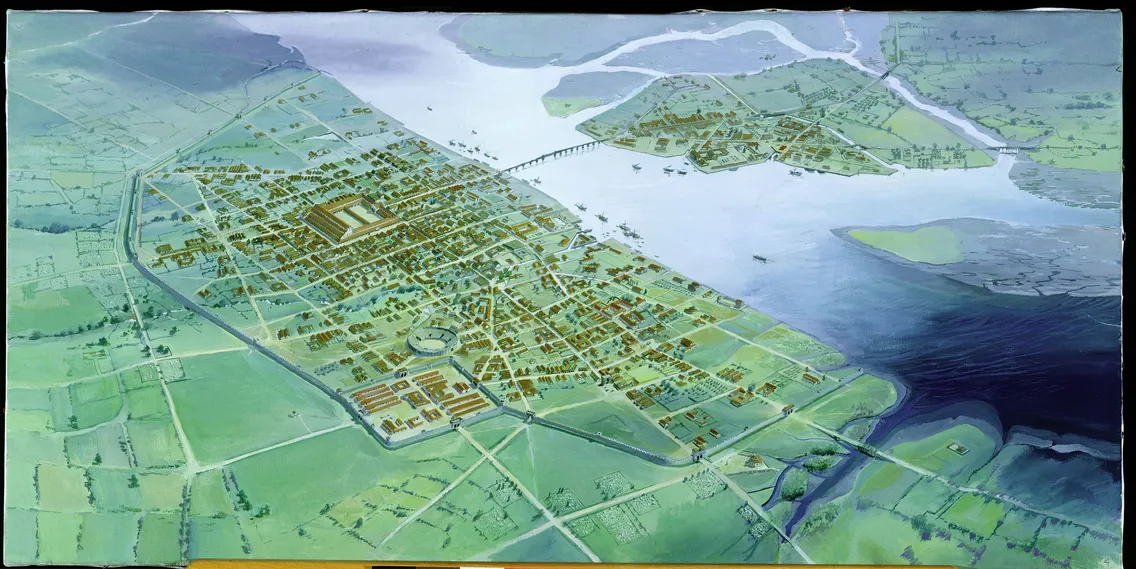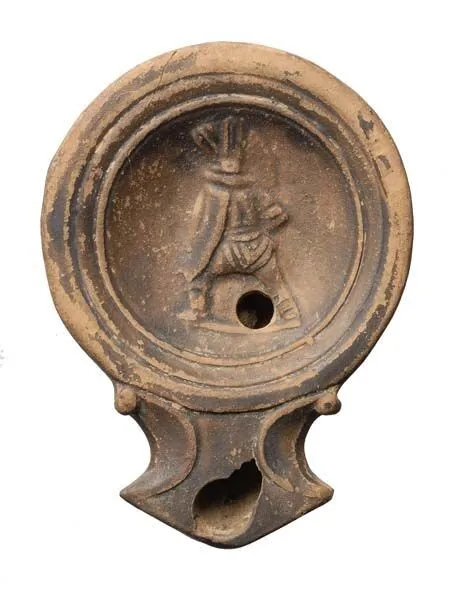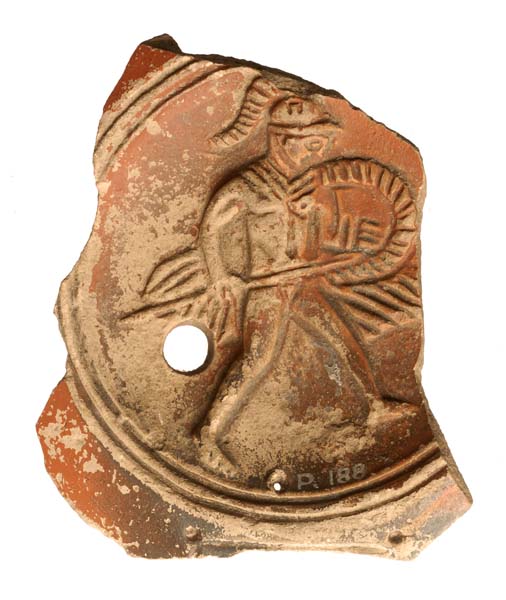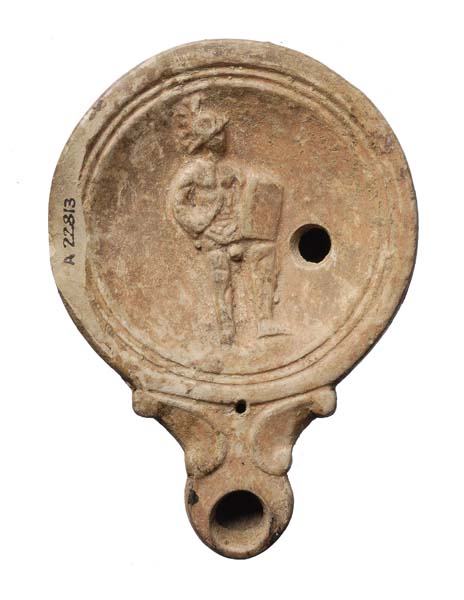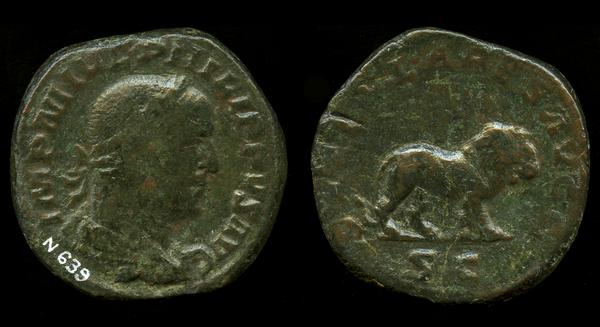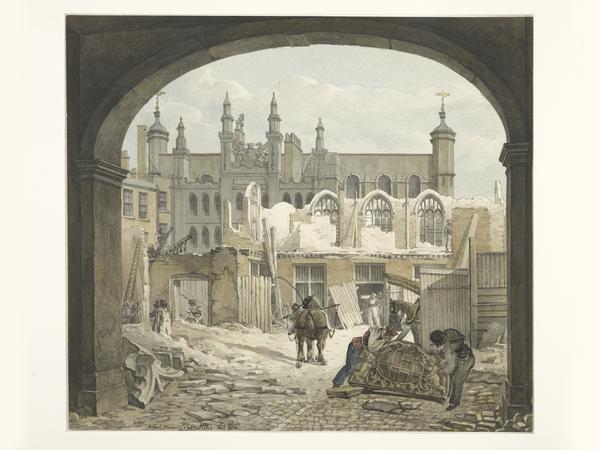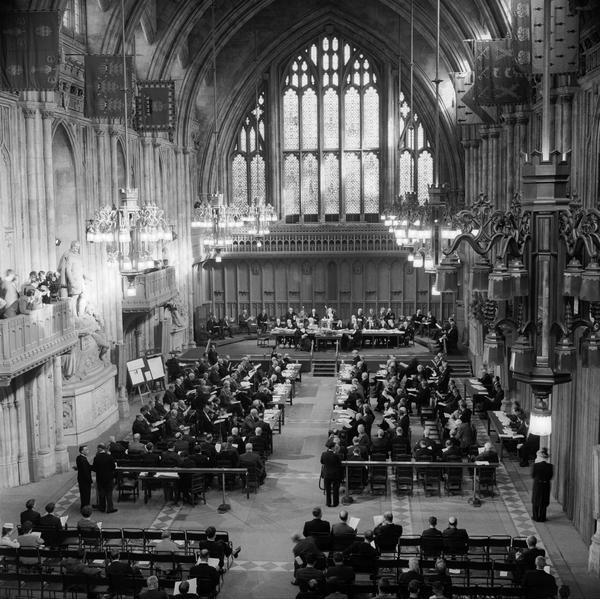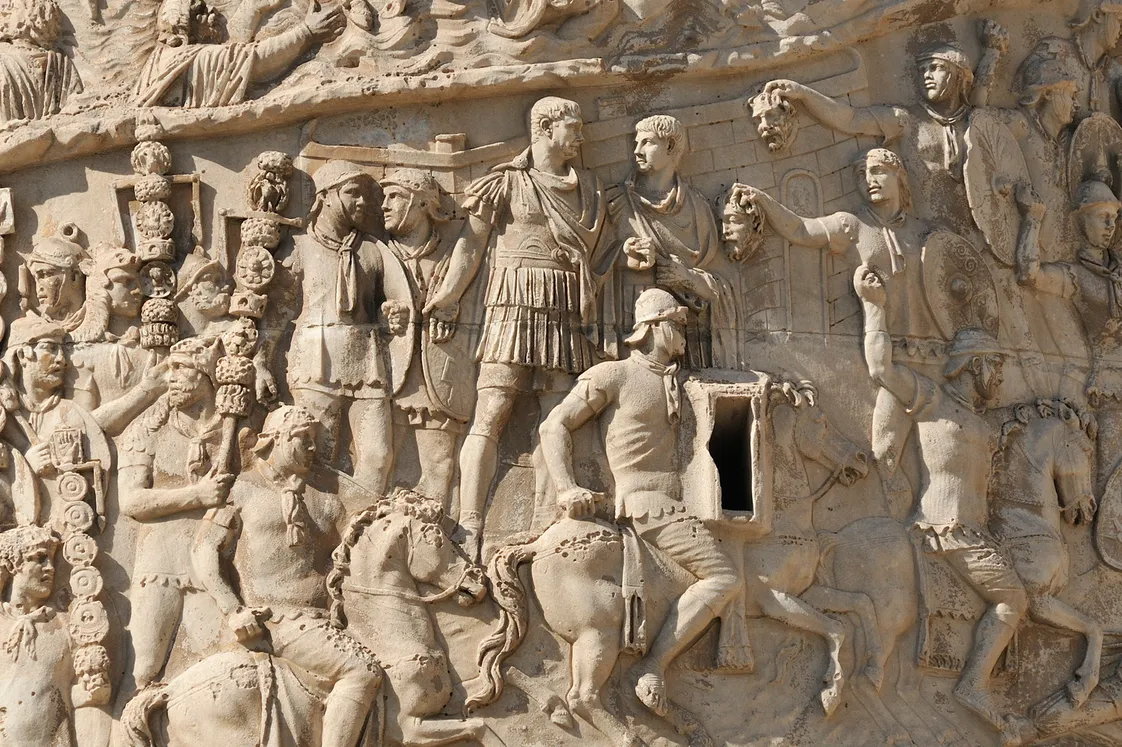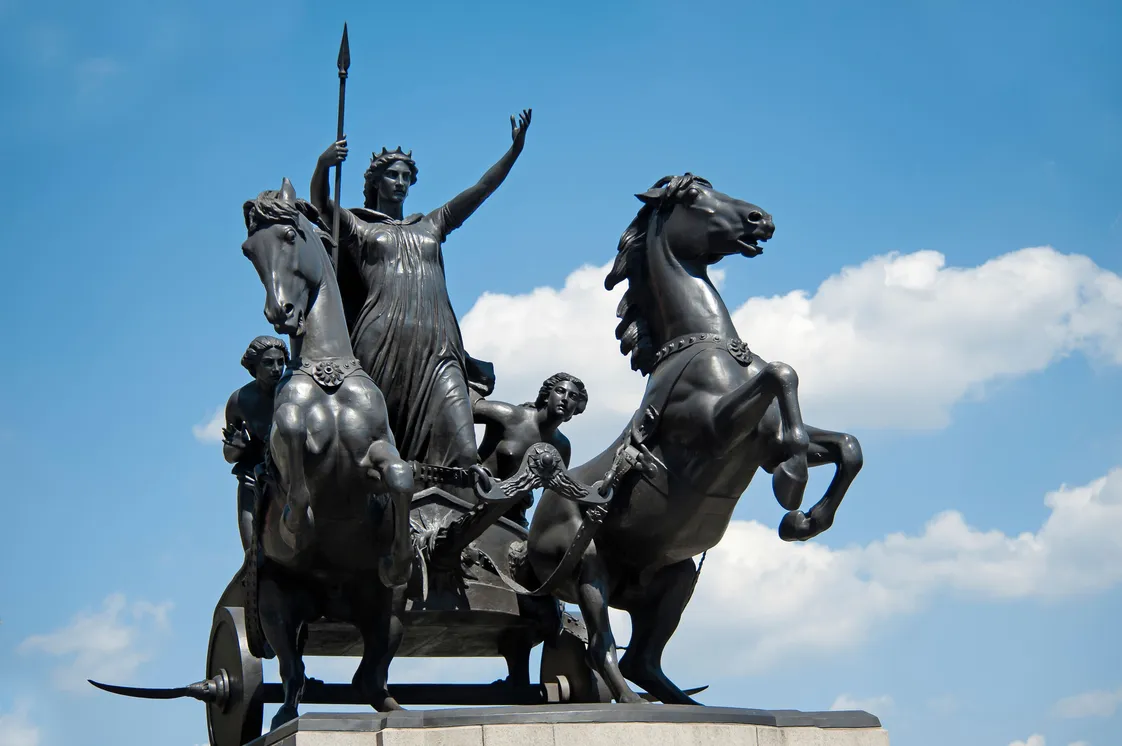The Roman amphitheatre in central London
In 1988 archaeologists discovered something they’d dreamed of – London’s Roman amphitheatre, the arena where gladiators battled for an audience’s approval.
Guildhall, City of London
70–300 CE
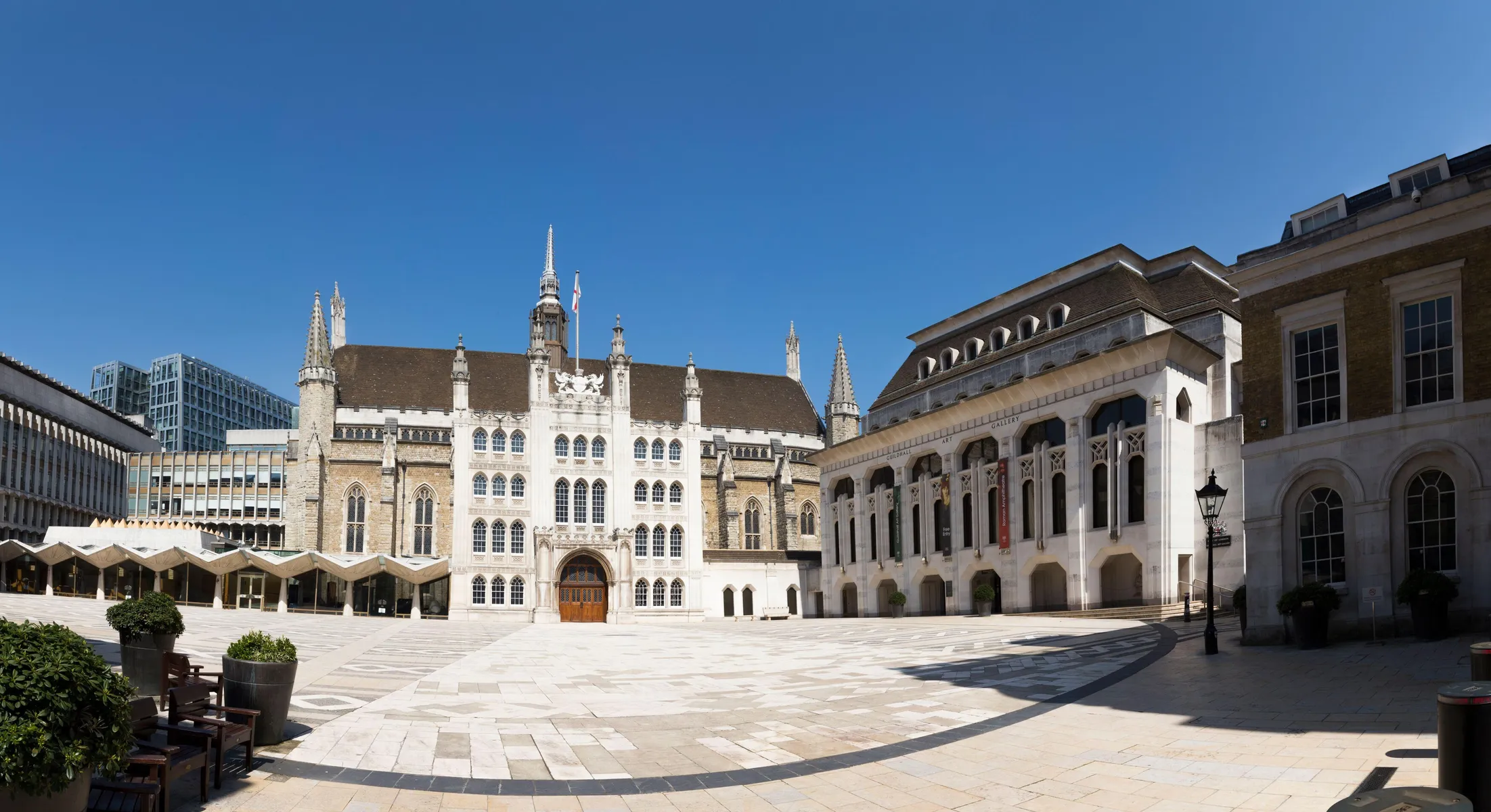
The black line outside the Guildhall marks the outer wall of a Roman amphitheatre.
The biggest show in town
Founded in 47 CE, London became the largest Roman settlement in Britain. It had many of the typical buildings found in urban areas across the empire.
There were public baths, temples, a fort and the forum, a public square surrounded by shops and an enormous hall known as a basilica.
There was also an amphitheatre, a place for mass entertainment where people flocked to watch gladiator contests, public executions, boxing, athletics, music and religious events.
The amphitheatre stood on the site where today you’ll find the Guildhall in the City of London, just south of Moorgate. In Guildhall Yard, a curved line of dark stones shows you where the arena’s outer wall once was.
How was the amphitheatre discovered?
Archaeologists had long wondered if Roman London might have had an amphitheatre. There was a chance that even if it did, the structure was only made from wood, which would have decomposed over time, making it much harder to find.
In 1988, archaeologists were working on a site by the Guildhall, where a new art gallery was about to be built.
The Guildhall is interesting enough itself. This medieval building with 18th-century additions was London’s town hall, the centre of its civic government.
But this wasn’t a likely spot to find an amphitheatre. They’re more often found outside the walls of Roman cities. The Guildhall stands inside the defensive walls the Romans built around their city around 200 CE.
Against all expectations, a section of Roman stone wall appeared during the dig, amazing the archaeologists working on it.
They went on to find more sections of wall and parts of a wooden drainage system.
Despite being nearly 2,000 years old, the wood had been preserved because of the wet ground. The Romans probably built their amphitheatre in this area because it was too damp for houses.
“Gladiators toured the Roman empire to put on a show”
How big was the amphitheatre?
We think the amphitheatre could have seated as many as 7,000 people.
The amphitheatre was over 100m long. The arena in the centre was roughly the same size as the Guildhall Yard – so if you ever visit, you’ll get a good feeling for what the gladiators faced.
What did the amphitheatre look like?
The central oval-shaped arena was dug into the ground, and had wooden seats built onto the earth banks surrounding it.
It was first built in 70 CE. At this time London was being rebuilt bigger and better after the Boudican revolt which practically destroyed the city ten years before.
In around 100 CE, the amphitheatre was upgraded. A stone wall was built around the central arena, with stone-lined entrances on the east, west and south sides. The walls were decorated with colourful plaster and Egyptian marble.
What happened at the amphitheatre?
For most of us today, Roman amphitheatres make us think of gladiators battling to the death. This probably happened here, but it would have been rare. Gladiators toured the Roman empire to put on a show. They often faced locals, who usually didn’t stand a chance. In our collection, there are several bowls and lamps showing gladiators.
This entertainment for the masses might seem like a brutal spectacle, but it was common across the empire. Just as with today’s sports, Londoners would have enjoyed betting money on the result.
Evidence of what exactly took place inside London’s amphitheatre is limited. One piece of evidence comes from a small room on the east side of the arena, where there may have been a trapdoor. This would have allowed wild animals to be released into the arena, most likely native animals like wolves or bears.
The arena was also the venue for public executions, athletic contests and boxing. It could host musical and religious events too.


